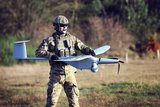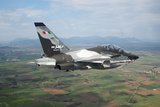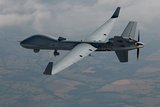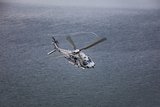Indra reveals predictive maintenance deal for Spanish Eurofighters
Spanish Air Force single-seater and two-seater Eurofighter Typhoon. (Copyright: Eurofighter/Geoffrey Lee)
Indra Sistemas is developing an AI-based maintenance solution for Eurofighter Typhoon aircraft operated by the Spanish Air Force, under an R&D contract from the Spanish defence procurement agency DGAM.
The MP C16 preventive maintenance solution will analyse massive volumes of Typhoon systems data to enhance operational availability by detecting failures in critical avionics systems ‘before they occur’, Indra claimed in a 13 January announcement, adding that deployment of the AI solution ‘will represent a new, previously unexplored milestone in aircraft maintenance in Spain’.
In particular, the use of AI aligns with the development of the Sustainable and Intelligent Connected Air Base programme from the Spanish Air Force.
Predictive maintenance for Spanish Eurofighters will allow early detection of potential critical systems failures before each mission. ‘This intelligent maintenance system not only improves safety, but is also cost-saving, extends each platform’s service life and ensures maximum fleet availability,’ Indra claimed.
Related Equipment in Defence Insight
Eurofighter Typhoon Tranche 2 (Block 8, 8A, 9, 10, 10C, 11, 11C, 15, 15C)
More from Air Warfare
-
![Poland air report: Drones, transport aircraft and tankers dominate potential procurement plans]()
Poland air report: Drones, transport aircraft and tankers dominate potential procurement plans
With a rising defence budget and equipment list, Poland’s air market is set to grow as the country continues to modernise its transport and helicopter fleets while seeking out uncrewed aerial vehicles and loitering munitions.
-
![Portugal signals interest in establishing A-29N final assembly line]()
Portugal signals interest in establishing A-29N final assembly line
As the launch customer for the NATO-configured variant, Portugal also took delivery of the first five A-29N aircraft from its order for 12, placed in 2024.
-
![Leonardo signs contract on Austria’s M-346 aircraft order]()
Leonardo signs contract on Austria’s M-346 aircraft order
The first of the 12 M-346 aircraft are expected to be delivered to the Austrian Air Force by 2028, according to the company.
-
![2025 UAV market review: $7.8 billion in new contracts signed as US leads spending]()
2025 UAV market review: $7.8 billion in new contracts signed as US leads spending
Qatar and Indonesia followed the US’s high spending on new uncrewed aerial vehicle contracts across 2025, while MALE and micro drones and loitering munitions were particularly popular subcategories this year.
-
![German Navy in “ramp-up” phase as it welcomes first NH90 Sea Tiger delivery]()
German Navy in “ramp-up” phase as it welcomes first NH90 Sea Tiger delivery
With all 31 aircraft set to be delivered by 2030, the helicopters will gradually replace the ageing Sea Lynx fleet which are due to be retired in 2026.






















